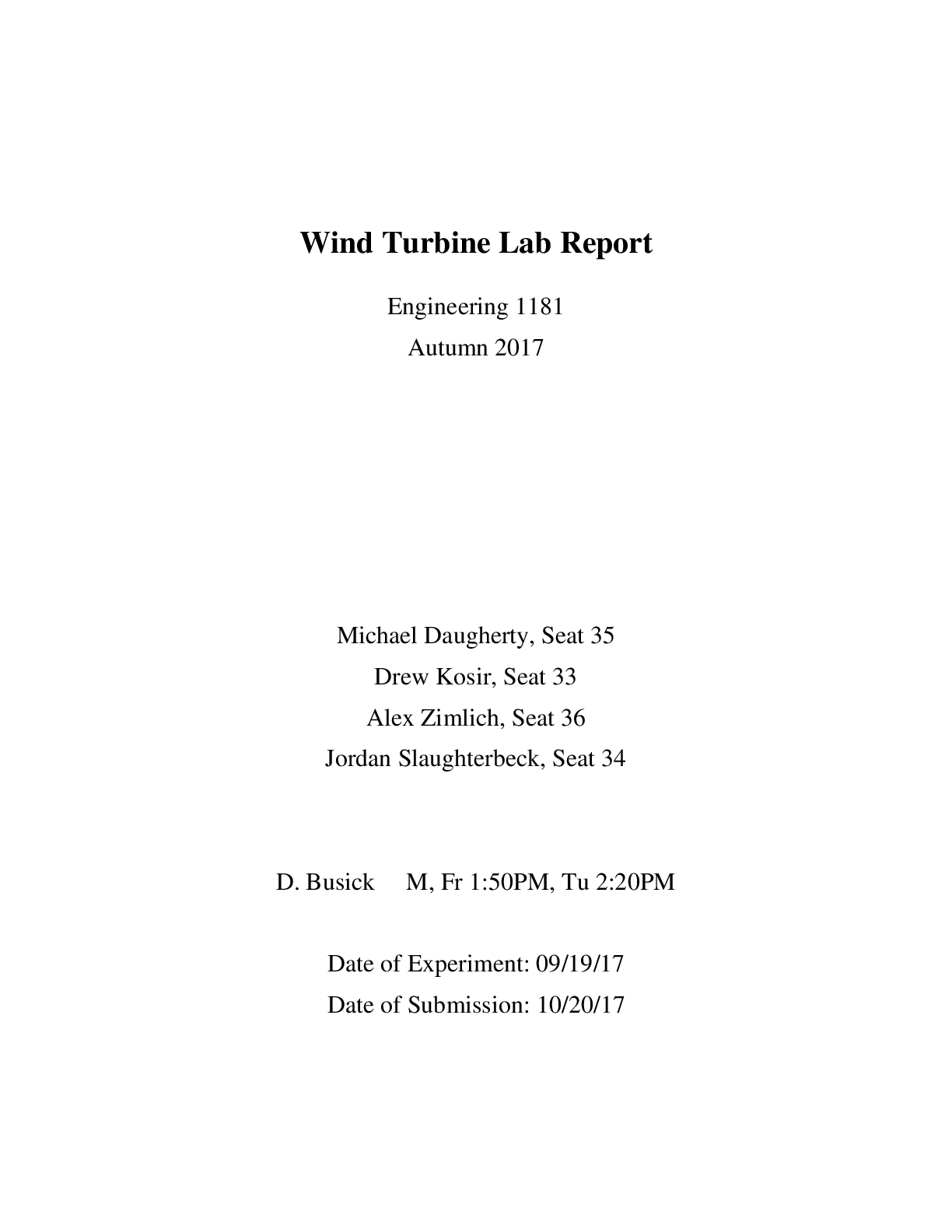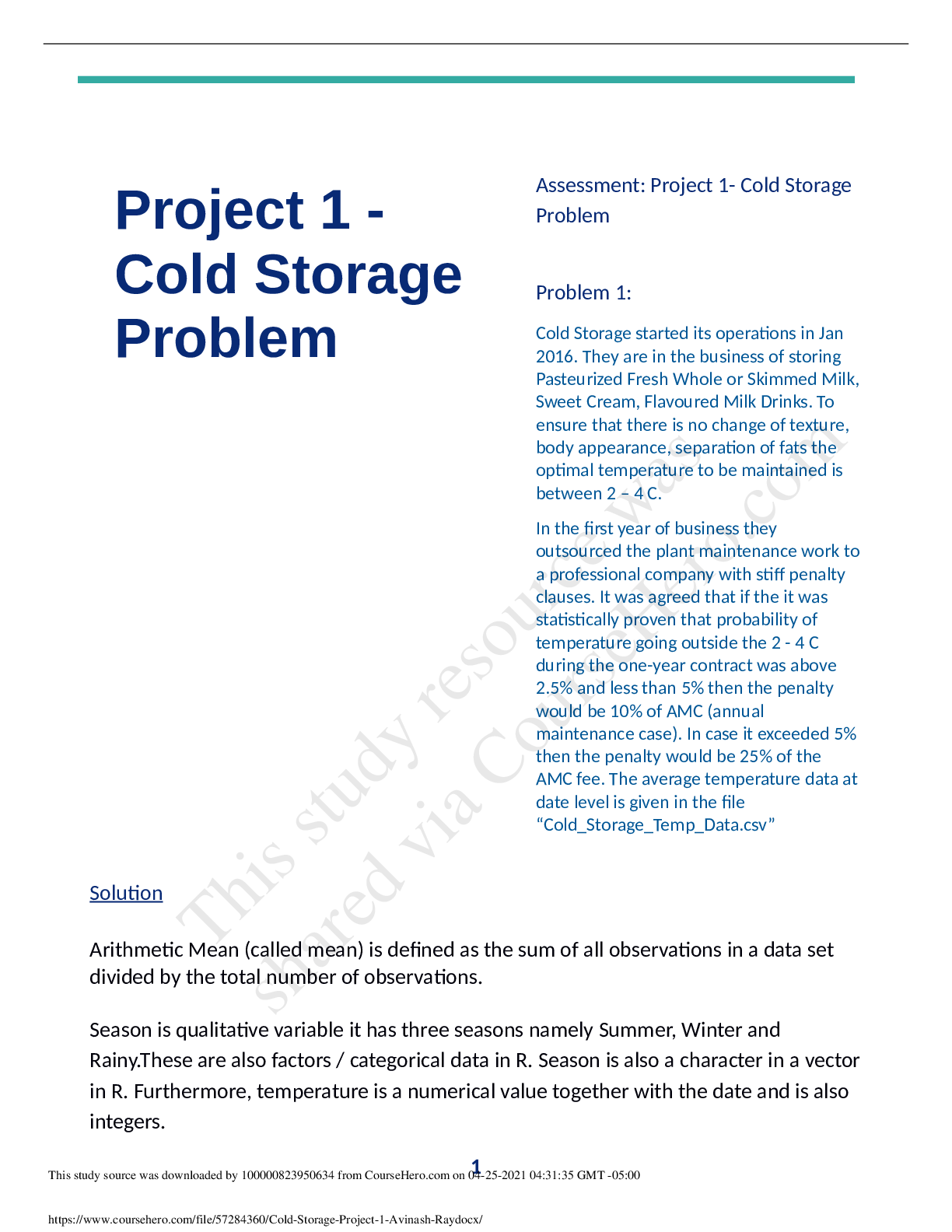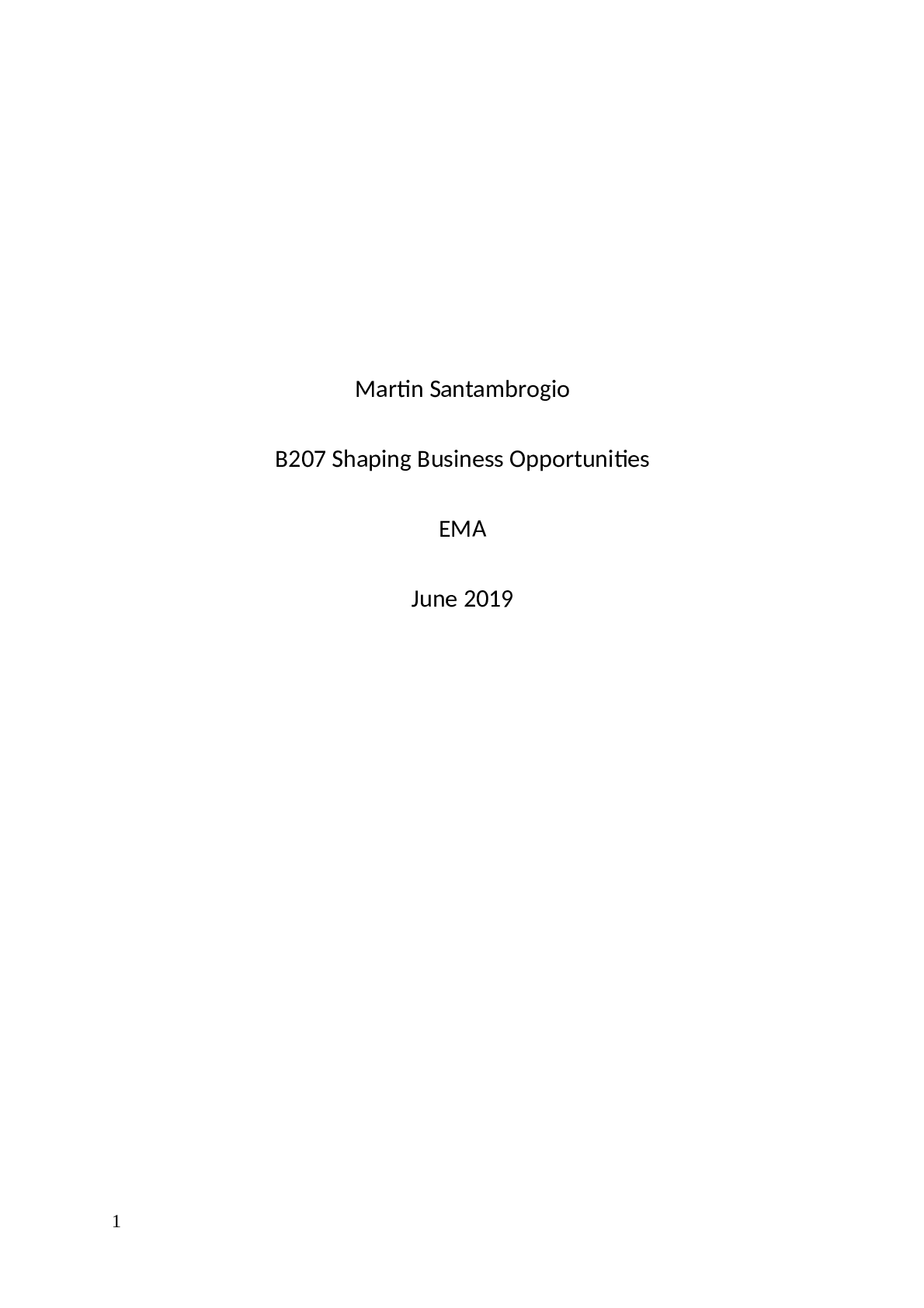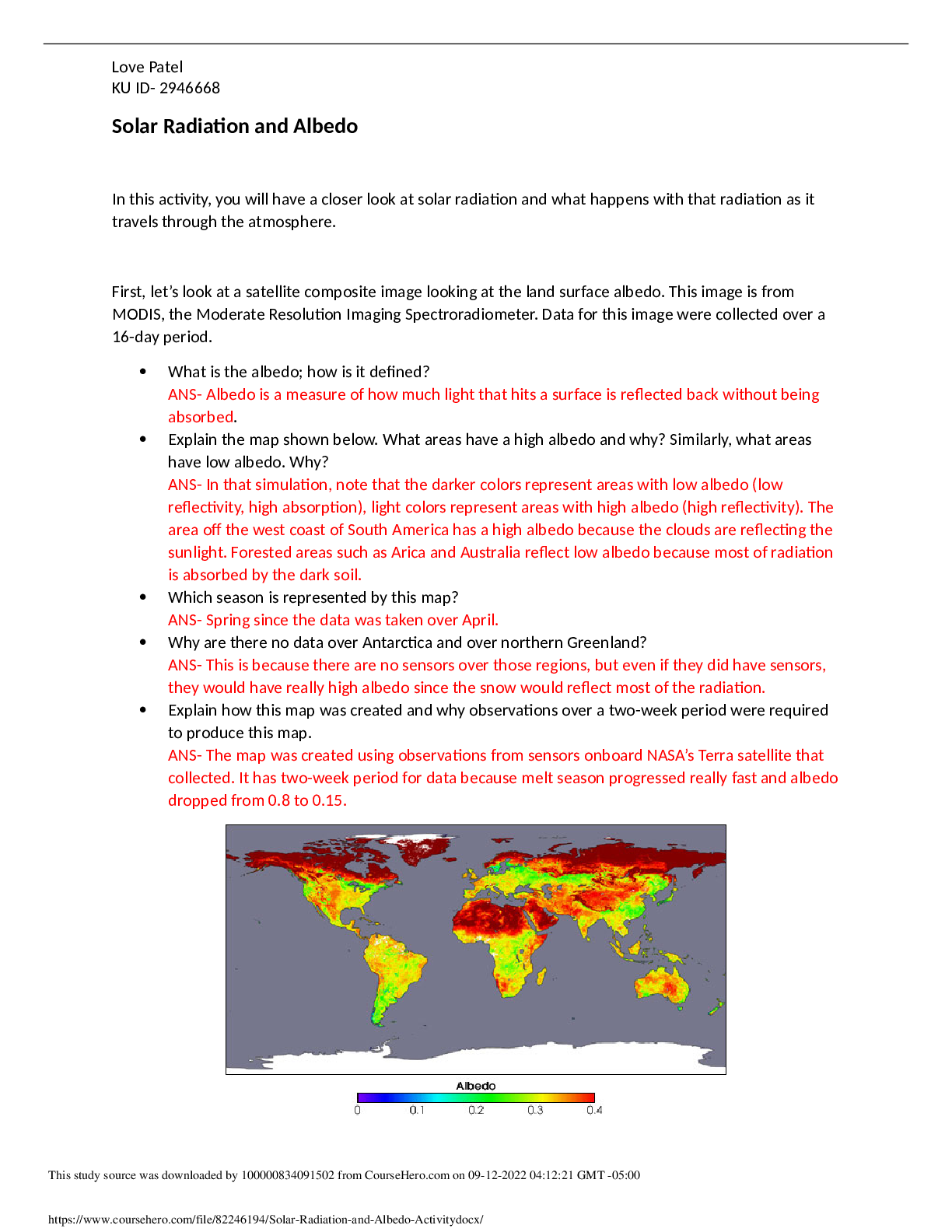Mechanical Engineering > Report > Iowa State University - ME 421ME 421Lab3 Formal Report FIRST ORDER SYSTEMS: DETERMINING EQUIVALENT S (All)
Iowa State University - ME 421ME 421Lab3 Formal Report FIRST ORDER SYSTEMS: DETERMINING EQUIVALENT SYSTEMS
Document Content and Description Below
FIRST ORDER SYSTEMS: DETERMINING EQUIVALENT SYSTEMS ABSTRACT Patent 7,493,601 makes the claim that an electrical, a fluid system, and a thermal system are all equivalent systems. Comparable labora... tory experiments were design and used in order to check for the validity of this claim. In this laboratory, each of the three systems was analyzed in order to determine whether or not the systems were equivalent. The 63.2% Method was used to isolate the identifying characteristics of each system. The systems were found to be both first order systems but because of the large difference in magnitudes of their time constants, τ, it was concluded that the electrical system was not equivalent to the thermal and fluid systems. INTRODUCTION Grunch and Tromby, Attorneys at Law needed to test the claims of Patent 7,493,601, that an electrical system, a fluid system, and a thermal system are equivalent (ie. each system has a comparable determining characteristic). Knowing if two systems are equivalent is helpful in modern times because of two reasons: (1) it allows a comparison between different preferred types of systems, and (2) it allows experiments on one system to give equivalent information about another (larger, more expensive) systems. In order to determine weather or not two systems’ responses are equivalent, they must be (1) of the same order and (2) possess a system characteristic (e.g. τ for first order systems) of the same magnitude. Most systems fall into the category of either a zeroorder, first-order, or second-order system. These system’s respective forms of differential equations can accurately describe these systems. For example, first-order differential equations are a very accurate way of portraying a first-order system. Each of these types of systems also has defining features such as a time constant τ for first-order systems and ω for second-order systems. These characteristics are defined as the coefficients of the differential terms after the differential equation has been put into standard form. These coefficients are defining features and are the main contributors to how a system responds. Because these coefficients are functions of time, they act as indicators as to the rate at which the system responds to the imposed change. For example, small values of τ in firstorder systems indicate a rapid time response, and a larger value indicates a slower time response because of its inverse relationship with time. This experiment will test that claim made using the basic knowledge of equivalent systems and mathematical analysis previously described. ANALYTICAL DEVELOPMENT Upon observation, the first electrical system was determined to be a simple RC circuit. Knowing RC circuits are first-order systems, the electrical system was determined to be a first-order system depending on the characteristic τ. As Patent 7,493,601 is defined, the electrical system consists of a series circuit of a 2200 Ω resistor and a 100 µF capacitor. Using the equation, ? = ? ∗ ? (1) τ was predicted to be to be 0.22 seconds theoretically. For these theoretical calculations, it was assumed that there were no loading errors and that the frequency was less than the critical frequency of the system. Having recently studied a similar fluid system in class, the fluid system was assumed to portray first order system characteristics as well. From the preliminary analysis done in lab, ? = !" ! (2) where R is the resistance to outflow (226,466 1/(ft-s)), A is the area of the basin (0.034088 ft2), and g is gravity (32.2 ft/s2). This results in a theoretical τ of 240 seconds. The thermal system was likewise assumed to be a first order system, as the temperature of the inside of the box will approach a limit similarly to a first-order differential equation. Calculating the τ value for the second system was more complicated however but can be done using equation (2) below: ? = ?? = ??!?!"#$%& (3) where C p is the specific heat of the fluid (water: 4.184 kJ/kg-K) , m is the mass of the water (15 grams), and R is the total thermal resistance of the system. In order to find R, equation (3) was used [1]: ? !"#$%& = ?! + !!!!!!!!! (4) [Show More]
Last updated: 1 year ago
Preview 1 out of 4 pages
Instant download

Instant download
Reviews( 0 )
Document information
Connected school, study & course
About the document
Uploaded On
Apr 10, 2021
Number of pages
4
Written in
Additional information
This document has been written for:
Uploaded
Apr 10, 2021
Downloads
0
Views
59

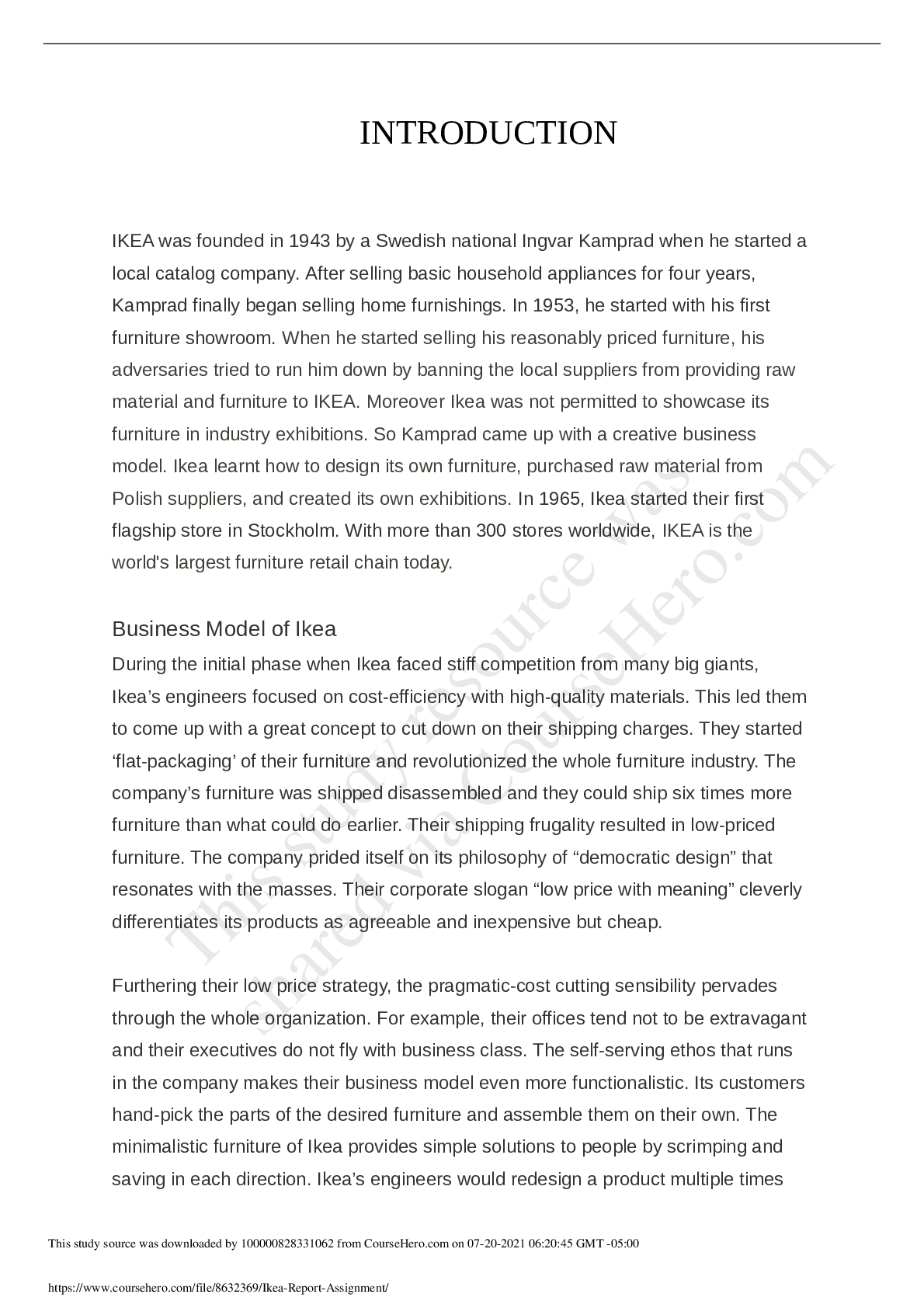



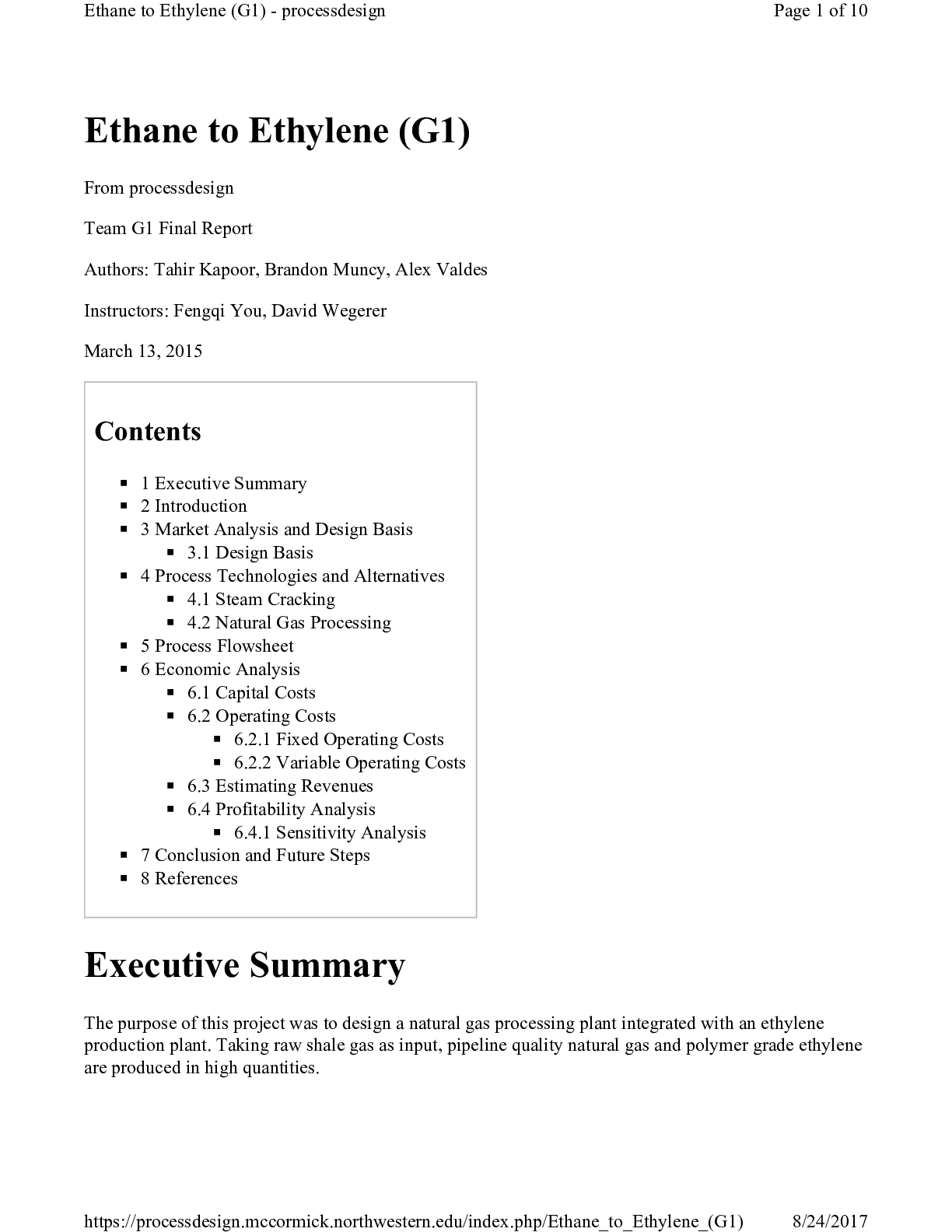









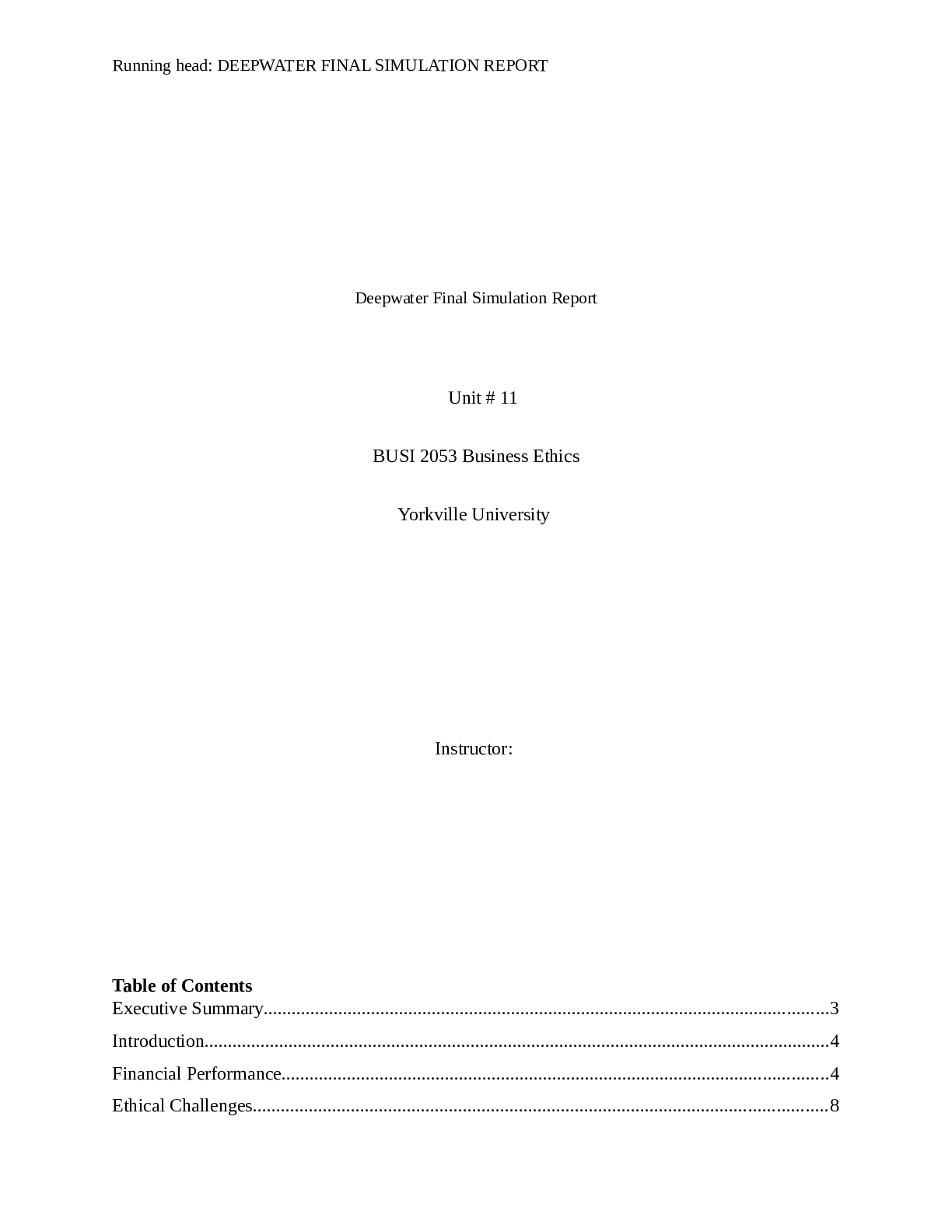


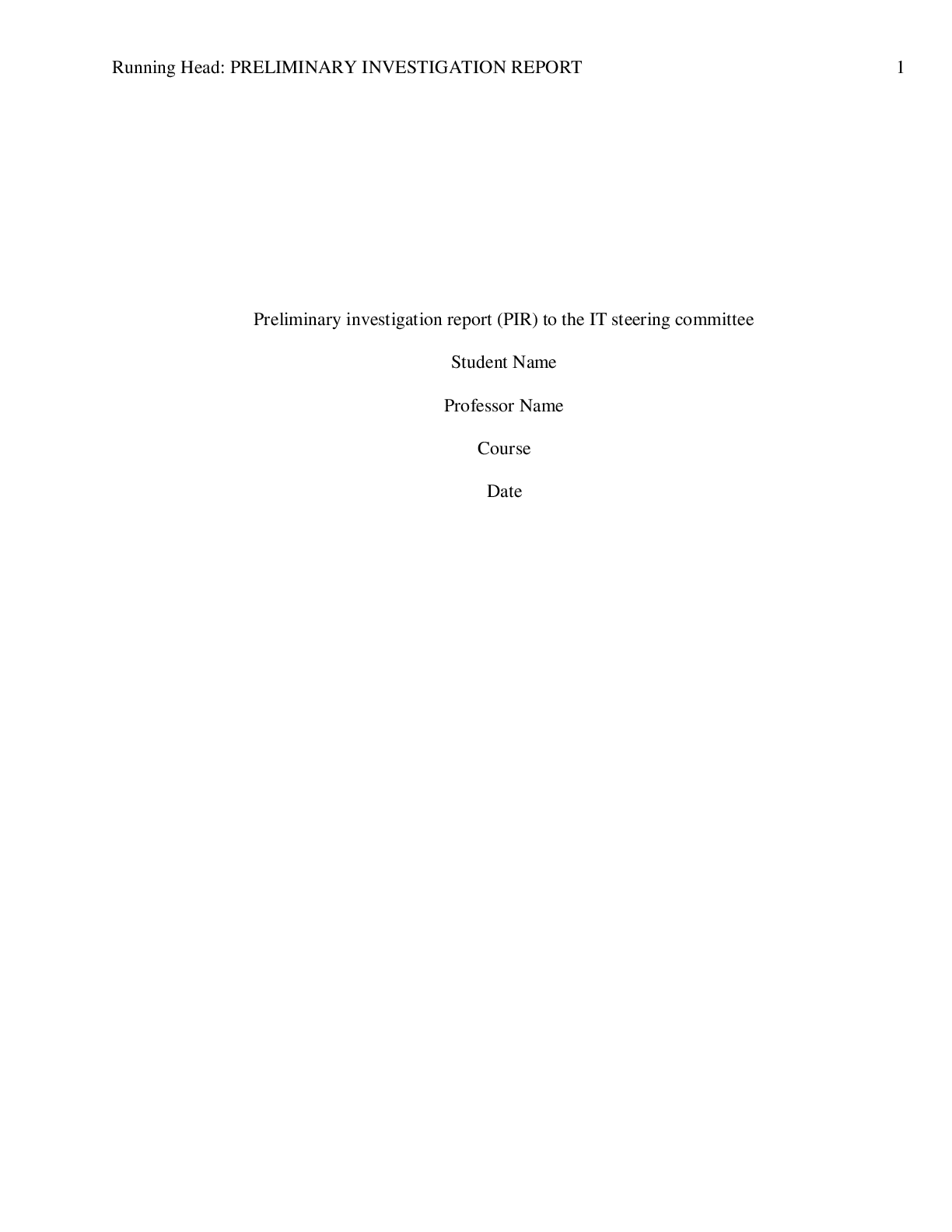
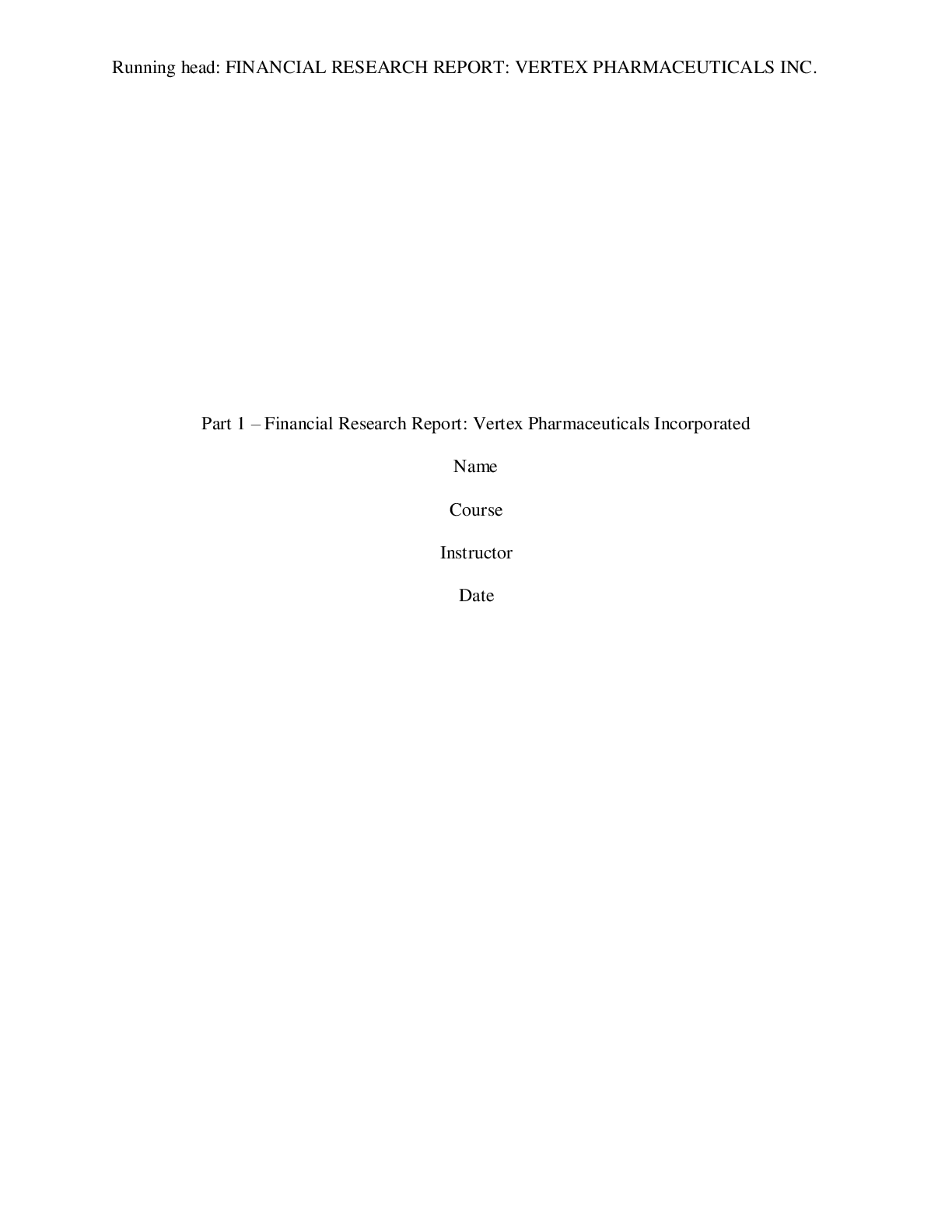
.png)




